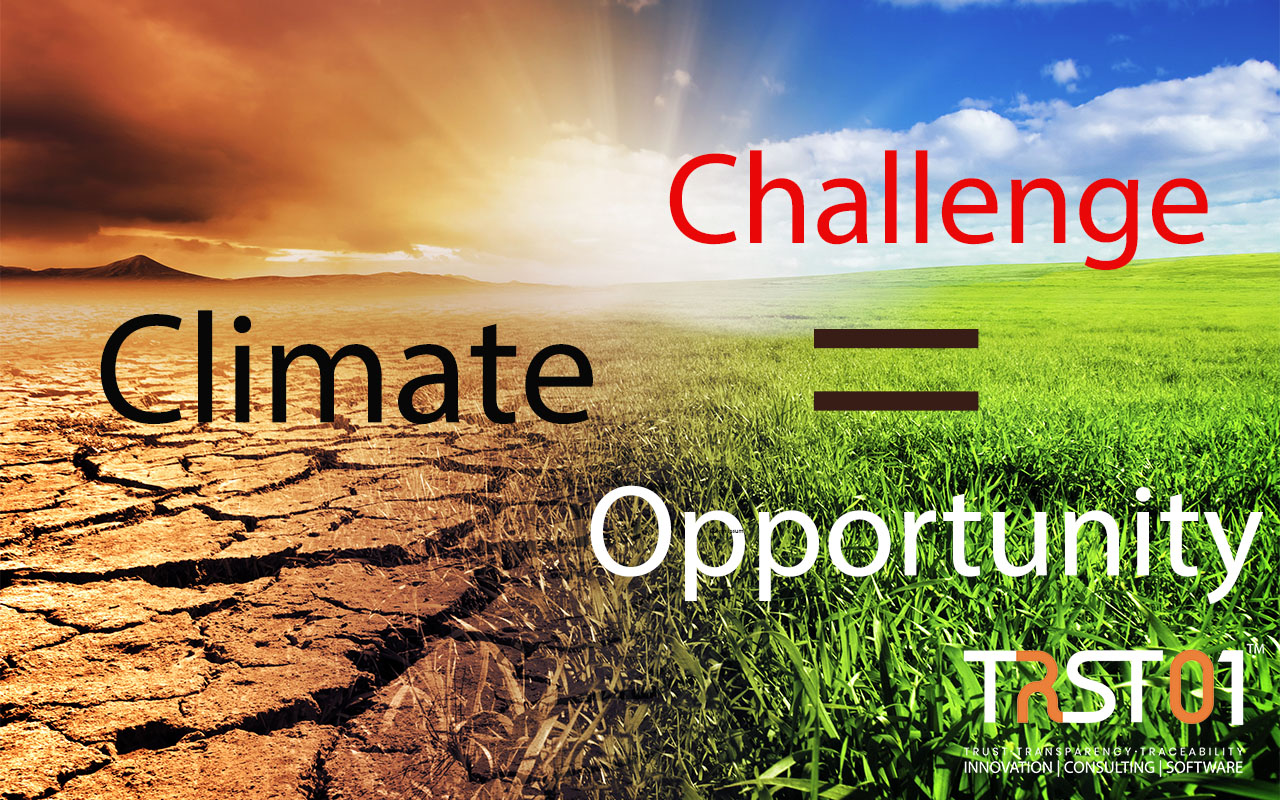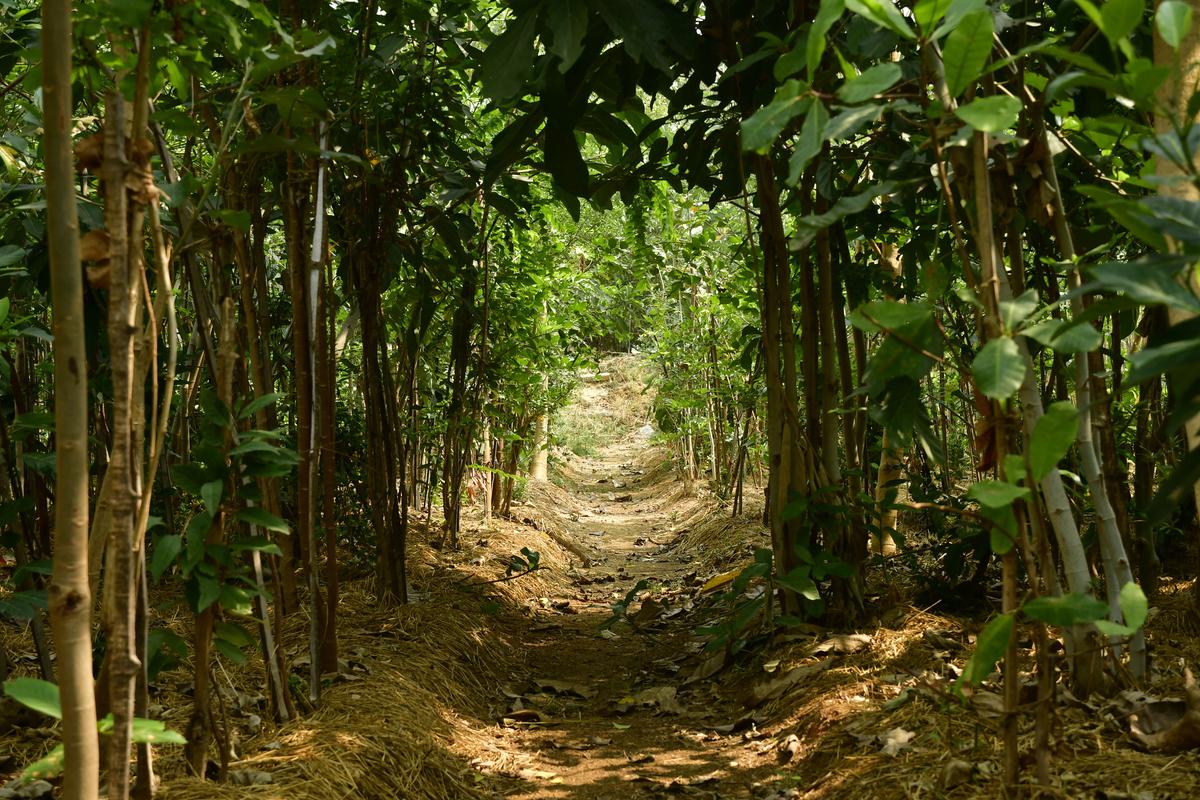Climate "Challenge = Opportunity"
Climate Change is not Hoax but Reality
12th Dec 2022
BNV Satish, TRST01

One can see from space how the human race has changed the earth. Nearly all available land has been cleared of forest and is now used for agriculture or urban development. The polar ice caps are shrinking, and the desert areas are increasing. The earth is no longer dark at night, but large areas are lit up. All of this is evidence that human exploration of the planet is reaching a critical limit. But human demands and expectations are over increasing. There is a famous quote by Mahatma Gandhi – “Earth provides enough to satisfy every man’s need, but not every man’s greed”. We all agree that there should be economic progression but not at the cost of environmental degradation. There should be a balance between environmental sustenance and economic advancement. We cannot continue to pollute the atmosphere, poison the ocean and exhaust the land. This isn’t any more available. By continuously polluting our environment, we are running the most dangerous experiment in the name of development.
An analogy is used: When the well is dry, we know the worth of water. In the same way, when there are a lot of resources available for energy creation, as a human nature, we tend to use beyond our need, and without our consciousness, by doing so, we release a lot of carbon or other inert gases into the atmosphere which leads our atmosphere to become a gas chamber which affects our body. These gases are carbon dioxide, methane, carbon monoxide, lead, nitrogen oxides, ground-level ozone, particle pollution (often referred to as particulate matter), and sulphur oxides. These gases engulf the atmosphere and heat up, which in turn melts polar icecaps, which submerge the small islands in the Indo-Pacific Ocean and change the weather patterns, which affects the production of harvest creating food demand and inflation which directly or indirectly affects the farmer’s’ and poor. Climate Change knows no borders!

In COP21 held in Paris in 2015, there was an agreement by 196 parties to keep the rise in mean global temperature to well below 2 degrees Celsius (3.6 oF) above pre–industrial levels and preferably limit the increase in temperature to 1.5 degrees Celsius (2.7 oF).
We all know it’s not easy to halt the economic progression to save the planet; modern problems require modern solutions. In the same way, we must continue or lower the speed of economic development because we need that in this 21st century. Still, we can balance economic growth with the inclusion of sustainability factors in methodologies, practices, and techniques in every project we do.
It’s not that the world hasn’t had more Co2; it is not that the world hasn’t been warmer. The problem is the speed at which things are changing. We are inducting a 6th mass extinction event by accident, and we at SowandReap don’t want to be extinct. So, to make that difference, we take up innovative approaches and methodologies that balance the projects’ environmental aspects. SowandReap is collaborating with TRST01, undertaking projects that will positively impact the environment, like Biogas, Miyawaki and Vaari.
Biogas is an environmentally friendly, renewable energy source. It is produced when organic matter, such as food or animal waste, is broken down by microorganisms without oxygen in anaerobic digestion. After biogas is captured, it can produce heat and electricity for use in engines, microturbines, and fuel cells. Biogas can also be upgraded into biomethane, also called renewable natural gas or RNG, and injected into natural gas pipelines or used as a vehicle fuel. Biogas is a mixture of gases, primarily consisting of methane, carbon dioxide and hydrogen sulphide. We at SowandReap undertook a Biogas chamber at a hatchery. For each kg of feed consumed, a chicken produces approximately 1 kg of fresh manure with variable water content, while a commercial layer produces about 20 kilograms of waste per year. A poultry farm’s waste includes litter from broilers and layers, hatchery debris, dead birds and much other debris. So, a lot of methane and carbon gases are stored instead releasing into the atmosphere; this storage is taken as data by digitally measuring, reporting and verifying with the help of our technology partner TRST01 and tracing the footprint of these gases and acquiring carbon credits with the use of Blockchain technology provided by TRST01.

Miyawaki is a micro forest that adopts the technique of a Japanese botanist, Akira Miyawaki, who, in the 1970s, began to plant young native plant species – trees, shrubs, and grasses – in tight groves to restore degraded lands. Saplings planted close together proliferate as they compete for light (High-Density Planting). Miyawaki forests grow in two to three years and are self-sustaining. They help lower temperatures in concentrated heat islands, reduce air and noise pollution, attract local birds and insects, and create carbon sinks. SowandReap has also partnered with TRST01 to make a difference with digital MRV and on-chain (Web3) discoverable opportunities.
Project Varri, the first of its kind in India, focuses on Sustainable Agriculture and Climate change, the two most pressing issues today. To achieve this, we are collaborating with TRST01 and the state agriculture department to revolutionize water conservation and methane reduction practices in paddy cultivation. A scientist-farmer interaction and training program is our first step towards achieving Carbon neutrality on AFOLU (Agriculture, Forestry and Other Land Use) credits. SowandReap focuses on identifying new and innovative ways to help farmers transform agriculture into climate-positive practices to achieve sustainability.
In conclusion, we at SowandReap are the first generation to feel the effect of Climate Change and will be the last generation who can do something about it. Our team always reverb with the quote of Dr Jane Goodall- “What you do makes a difference, and you have to decide what kind of difference you want to make”, so we at SowandReap, along with TRST01 want to make that positive difference that will reap the fruits.
Reference
1.BuzzOnEarth. https://www.buzzonearth.com/blog/2020/11/19/21-climate-change-quotes/
2. When is bio gas? Explained by FAQ Blog – timon.youramys.com. https://timon.youramys.com/when-is-bio-gas
3.Wise, Dana. “Integrating the World Food Prize Youth Institute Into a School-Based Agricultural Program.” The Agricultural Education Magazine, vol. 89, no. 2, National Council for Agricultural Education, Sept. 2016, p. 19.
4 How the Miyawaki method can transform Indian cities – SEI. https://www.sei.org/about-sei/press-room/how-the-miyawaki-method-can-transform-indian-cities/
Share Blog on: